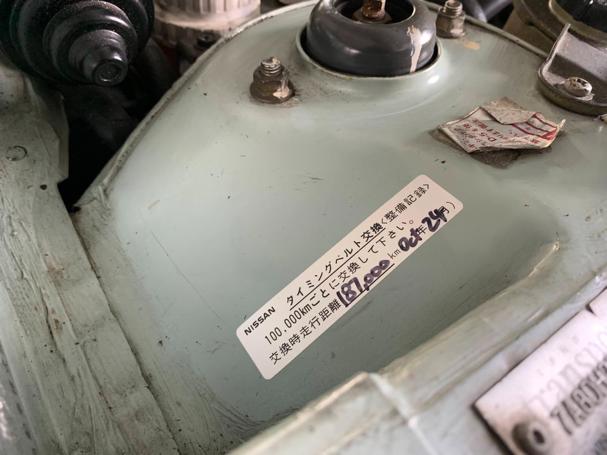Used car ownership is fraught with risk, and as we’ve worked our way through a few months of Nissan Figaro ownership, we’ve fiddled and fixed and upgraded and improved.
We replaced the turbocharger, and lots of little fixes like seals and rubbers, and now we get a chance to finally drive it... but not before one more big repair.

The Nissan Figaro Owners Group of NZ Facebook page is a good source of information, and comradery, given the limited number registered in NZ, and has been a good, quick go-to for simple things like what-goes-where and should-this-be-this style of questions. The group even holds semi-regular Fig Day Out events, when the weather and timing is right.

But one small thing that hasn’t been right with this car has been leaks: when we took over ownership, the Figaro had about 3-4 leaks, which were down to an overfilled oils (drained and refilled), leaking power steering lines (tightened), and one particularly persistent, final oil leak, coming from the belt and sump area.
Always a little tricky to diagnose given it could be the sump gasket, sump plug cam or crank seal, all leaks led to it being the front crank seal; what is a $10 part, but with a $1000 labour bill to replace it.

With this Figaro’s plan to be mechanically A1 fit and fresh, the parts were ordered to do not just the main front seal, but the cam timing belt as well, a strong recommendation by the Figaro community every 10,000km or five years – just to be safe.
Being safe is rather important, as the M10ET 1.0-litre turbo four-cylinder Figaro engine is an ‘interference’ design: that is, if a cam belt breaks, pistons hit valves with catastrophic results.
So, a new quality cambelt, cam pulley and tensioner spring were ordered, around $200 in total, by the time the parts were delivered two weeks later to NZ.
With a free weekend and helpful guides from both the Figaro Owners Group UK and YouTube videos, and some basic tools, the adventure began.

Off came the three belts for the power steering, alternator and power steering, the crank pulley bolt came off easily enough with a home electric impact wrench, and the upper and lower plastic cam cover bolts were all easily accessed and removed. However, the top cover’s removal is hindered by the driver side engine mount, which needs to come out: of the three key 12mm bolts, one sits deep within the metal plates, and suffers no fools.
A regular ratchet and socket fits, but after unscrewing it, the tool is hard up against the crossmember and unable to release the bolt, despite jacking up/lowering the engine for better access. The key is to use an offset ring spanner to reach in and unwind the bolt. Patience and a little luck had the bolts, and then the engine mount, all out, covers off, revealing access to the cam belt and then the front seal.

Having been done roughly five years prior, the belt was still in good shape, but the front seal was very worn, potentially not previously fully seated, so was clearly needing replacing. A pick carefully pried it out, the new seal lubricated and carefully pressed in, sitting visibly deeper and sealing better.

Then the new belt, pulley and tensioner spring fitted, using the handy tips from the Figaro Owners page, and a 4-5 hour hobby job (ie: not rushed) was done; the engine fired up, everything turned over without a problem, and a new supplied sticker was placed in the engine bay, advising the future owner that this job won’t need to be repeated until almost 2030.

After a test drive, warm up and idle, no more leaks! And the Figaro’s biggest, most stress-inducing job had been ticked off the to-do list, back to full health again and without the need for a drip tray.

Finally time to drive and enjoy the Figaro’s bag full of fun, and just in time for Spring. Wonder just how fast it is after all these years... sounds like a test for next time.













